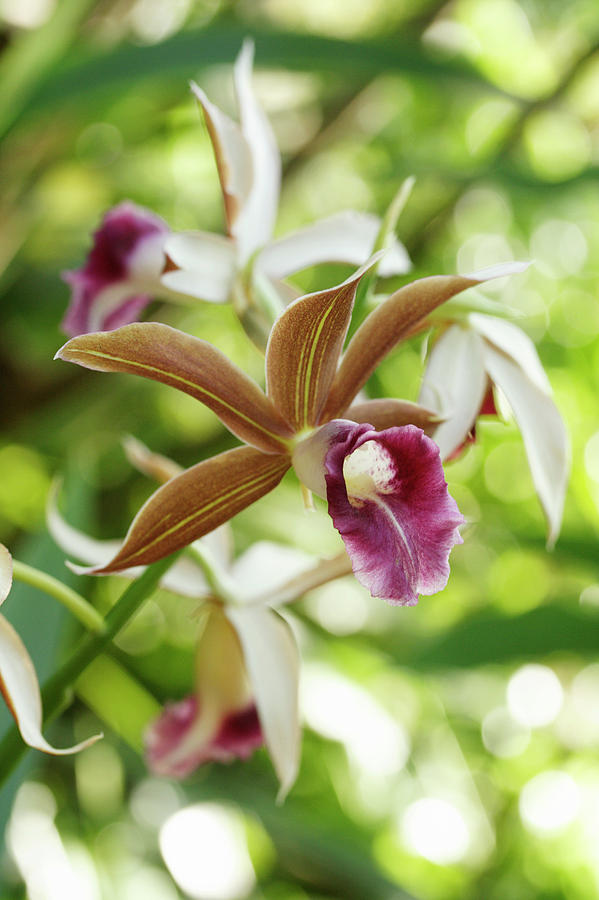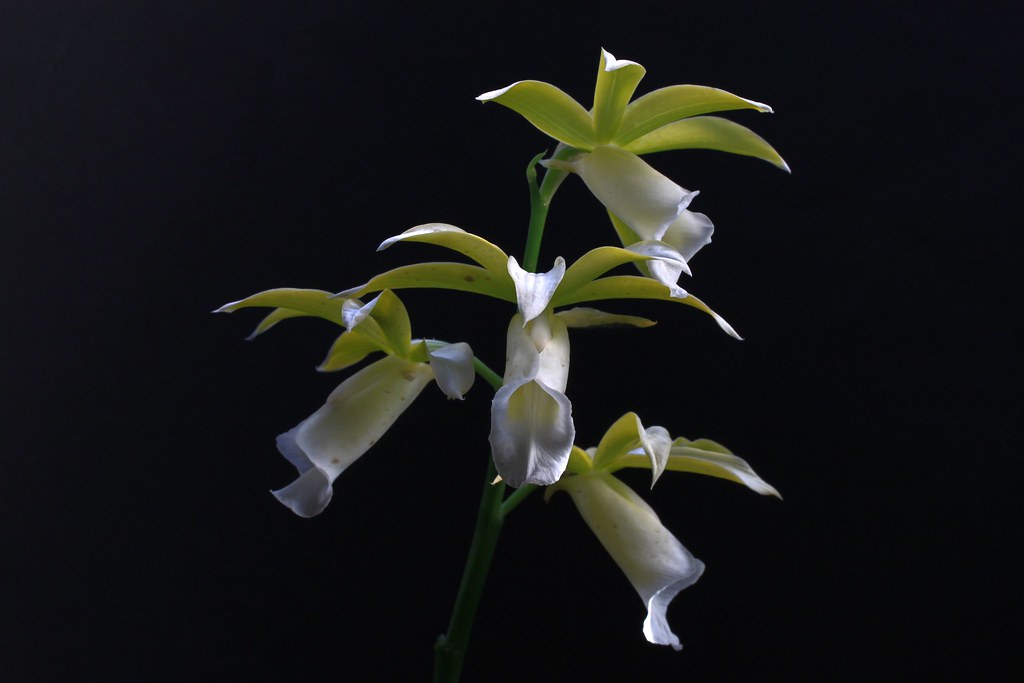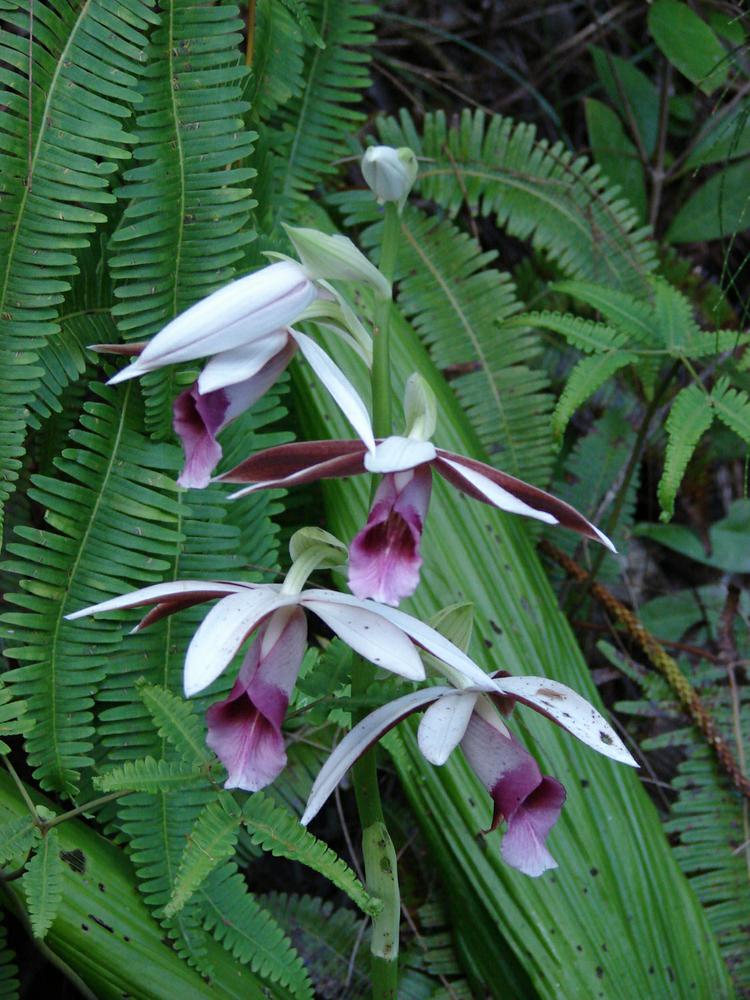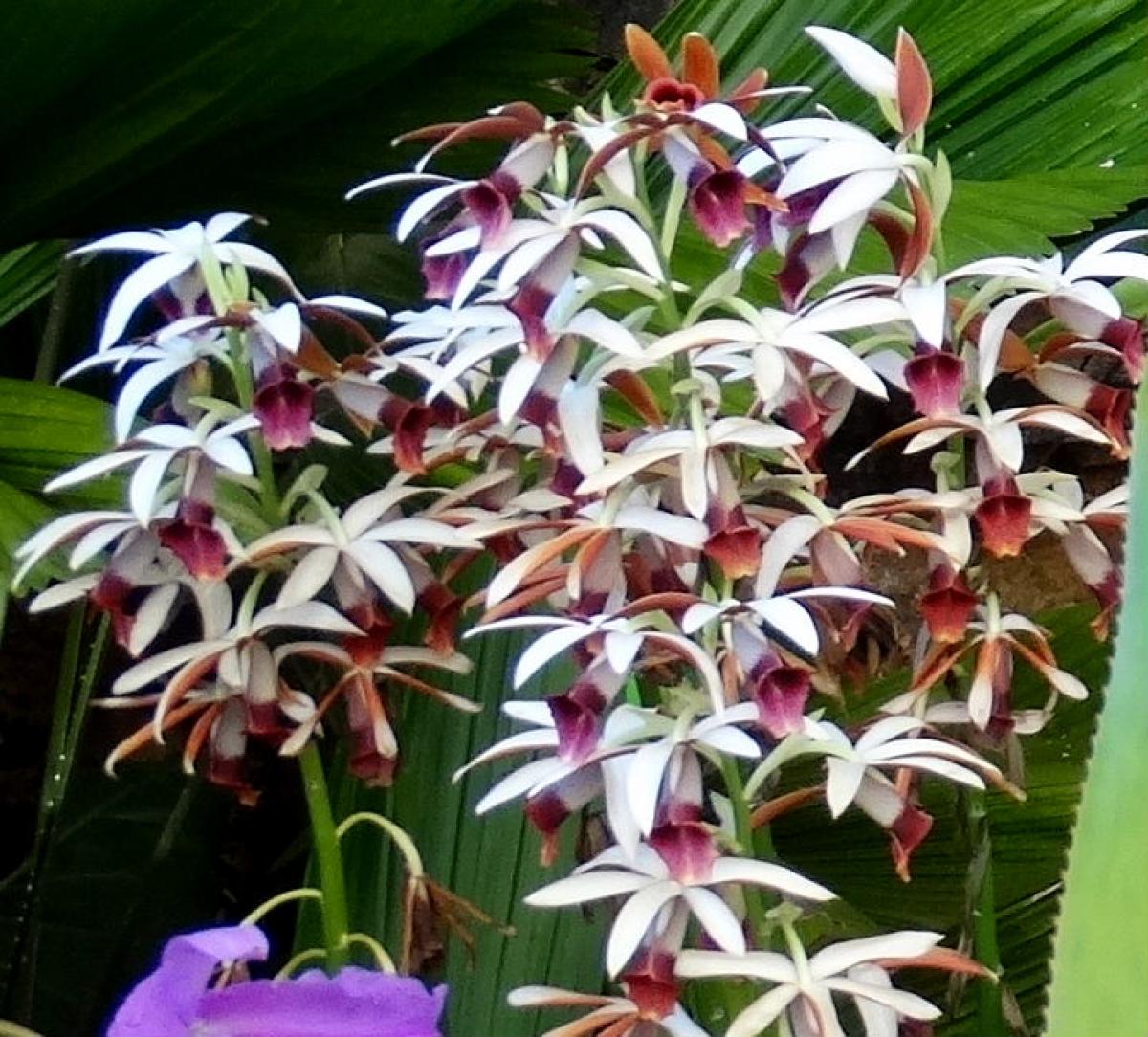
Phaius tankervilliae alba. Closeup. (Plant courtesy of Jac. Wubben
Phaius tancarvilleae, the Nun Orchid, is a very showy terrestrial orchid, and it's pretty easy to grow, too. I should note that there are several synonyms and common misspellings of the species name, such as "tankarvilleae", "tankervilleae", "tankervilliae", and even "tankerville". Get it right, please, as this is a pet peeve of mine!

Phaius tankervillae Orchidaceae gailhampshire Flickr
Phaius tankervilleae (Nun's Orchid) is a fairly large, terrestrial orchid species boasting multiple flower spikes densely packed with up to 10-20 fragrant flowers. Blooming in late winter to early spring, the showy hooded blossoms, 5 in. across (12 cm), are rusty brown with a purplish lip.

Phaius tankervilleae var.alba Orchids, Plants, Species
Phaius tancarvilleae var alba from Asia, the Pacific islands, Australia, and Africa In greenhouses; Contact us; Bibliography; References; Why Hortus Orchis. Phaius tancarvilleae var. pulcra photo Z : taxonomy: described by (Banks ex L'Heritier de Brutelle) von Blume, Carl.

Phaius Tankervilleae Flowers Photograph by Dan Sams/science Photo Library
Phaius tankervilleae is an orchid species identified by (Banks) Blume in 1856. ORIGIN: This large, terrestrial species is a hot to warm growing native of Fujian, Guangdong, Guangxi, Hainan, Xizang and Yunnan provinces of China, Hong Kong, Taiwan, the Pacific Islands, Malaysia and Indonesia at elevations up to 1300 meters in lower montane woods and in grasslands in moist depressions with black.

Phaius tankervilleae alba. Orchid flower show. By the Miami Valley
Phaius Phaius tankervilleae (Banks) Blume First published in Mus. Bot. 2: 177 (1856) This species is accepted The native range of this species is Tropical & Subtropical Asia to S. Pacific. It is a pseudobulbous geophyte and grows primarily in the wet tropical biome. Taxonomy Images General information Distribution Synonyms Accepted Infraspecifics

" Phaius tankervilleae alba "1 W. P. Flickr
Phaius tankervilliae is a terrestrial orchid called Nun's Orchid. It is a vigorous plant with thin, pleated leaves that produces erect flower spikes to 4 feet high with numerous flowers to 4 inches across. The flowers last 4 to 6 weeks and have yellow-brown petals with a white back, rose lip with a dark throat.

" Phaius tankervilleae alba " W. P. Flickr
This datasheet on Phaius tankervilleae covers Identity, Overview, Distribution, Dispersal, Diagnosis, Biology & Ecology, Environmental Requirements, Natural Enemies, Impacts, Uses, Prevention/Control, Further Information. Identity Preferred Scientific Name Phaius tankervilleae (Banks) Blume Preferred Common Name nun's-hood orchid

Buy Phaius tankervilleae alba Orchids Online
Phaius tankervilleae is commonly called the nun's orchid, possibly due to the lateral view of the column, which resembles a Madonna. The genus contains around 50 pseudobulbous, sympodial, robust species with very short rhizomes. There are both terrestrial and epiphytic species, with the terrestrials most widely known.

Buy Phaius tankervilleae alba Orchids Online
Phaius tankervilleae, commonly known as the Nun's Orchid, is distributed throughout northeastern Australia, southeastern Asia, and the Pacific Islands. It is also naturalized in many places in the tropics, including Cuba, Puerto Rico, Florida and Hawaii. This introduced orchid has 2-8 plicate leaves similar to palm leaves and blooms in March.

Phaius tankervillae 'alba' photo Pieter C. Brouwer photos at
The Phaius tankervilleae bloom, about 5″ inches wide, has petals bone-white on the back, the front a lovely tan edged with a thin streak of bone-white. The tubular lip, or labellum, about 2 inches long, was a lovely shade of carmine-red, the edge frilled and touched with that same tan.

Phaius tankervilleae var. alba a photo on Flickriver
Phaius tankervillae alba Discussion in 'Orchid Culture' started by tenman, Apr 8, 2020. Apr 8, 2020 #1. tenman Well-Known Member. Messages: 940 Likes Received: 767. Location: Ohio. Growing my third plant labeled as this. The first two, from different sources, bloomed out Dan Rosenberg. This one, from an international vendor, is doing what most.

Phaius tankervilleae (Nun's Orchid) Go Orchids
Phaius tankervilleae var. bernaysii, also known as the yellow swamp orchid, [2] is a species of orchid endemic to a small area of Queensland. It is an evergreen, terrestrial herb with large, crowded pseudobulbs, large pleated leaves and flowers that are white on the outside and sulfur yellow inside.

PlantFiles Pictures Species Orchid, Nun's Orchid, Nun's Cap Orchid
Phaius tankervilleae var. alba, blooming size. Features. Pot Size: 5" Blooming Size: YES. Temp: Cold - Intermediate. Light: Bright (filtered) Watering: Moist (Dry between watering winter) VERY FRAGRANT. PROTECT YOUR ORCHIDS .. Add Insurance! Heat Pack - WINTER Insurance - 100% Guaranteed Request 'Signature Required' Our Price: $4.00 .

Phaius Tankerville Nuns Cap Orchid Aloha Tropicals
!Phaius tankervilleae (Banks) Blume 1856. Photo By Lourens Grobler. Flower Closeup . Photo by Dale and Deni Borders. to . Common Name Nun's Orchid - Kunai [tall grass] Orchid - Emma Tankerville's Phaius [English Orchid Enthusiast]- in Thailand Ueang phrao - In Japan- Kaku-ran - Chiru-ran - Sarunkwa-bana - In China He Ding Lan . Flower Size 4 1/2" [11.5 cm] . Found in Fujian, Guangdong, Guangxi.

Bela Vista Orchids Phaius tankervilleae
Phaius tankervilleae is commonly called the nun's orchid, A species native to China, Hong Kong, Taiwan, Malaysia, and Indonesia. This presentation is an alba selection of the same. The contrast between the yellow-greenish sepals and petals and the pure white lip is classic & royal.

Andy's Orchids'
Answer Phaius tankervilleae, commonly known as the nun orchid or nun's cap, is becoming increasingly available as a potted plant at garden centers. It is a large-growing terrestrial that is appropriately planted in a medium such as one you might prepare for cymbidiums, spathoglottis or other terrestrial orchids.